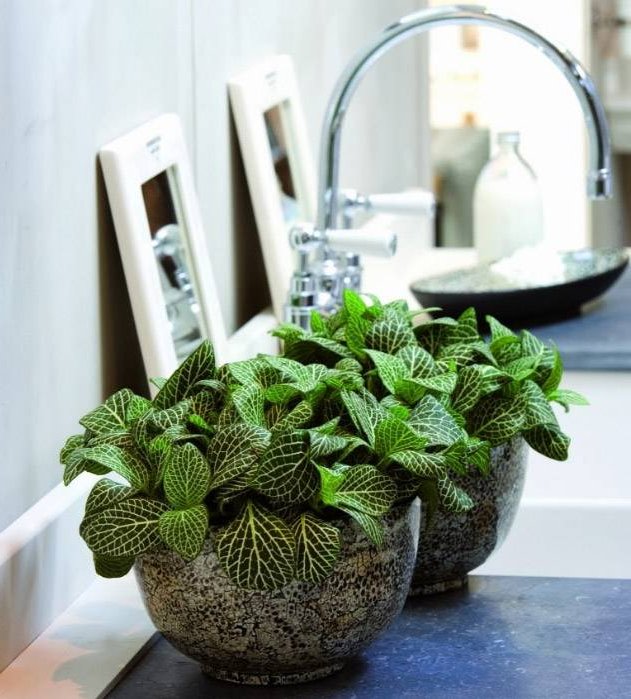Fittonias: ribbed patterns
They are so small that rarely exceed 15 centimeters in height, but the fittonias have earned a place among indoor plants for their curious foliage, in which the veins create colorful drawings with their white, pink, red or dark green lines in contrast to the color of the leaf blade. They are also very affordable and easy to care for. Phytoniums have only a few centimeters to show off their striking foliage. On green, white or reddish leaf blades, the veins mark their lines and webs in contrast, underlined with white, green, pink or carmine strokes.


The leaves, 3-5 centimeters, are oval and pointed, with smooth or wavy and trimmed margins, which multiplies its attractiveness even more if possible. They have a very short petiole, which is why the bushes look so compact and low.

The fittonia display area in the garden center is a veritable tapestry of seedlings in different shades, which gives an idea of the enormous variety of cultivars that have been developed from Fittonia verschaffeltii, native to the tropical zones of South America. The hardest thing is to keep just one! And their low price encourages collections. You can plant them in a wide variety of containers, even low ones, since their root system is superficial.
Phytonia care
Place it in a semi-shaded spot. It does not need a lot of light, but if the foliage looks sparse or loses color it means it is insufficient. Make sure it does not receive direct sun or cold air currents.

Make sure that the site is temperate. The ideal is between 18 and 22º, but never less than 13º.

Water it generously or by immersion, especially in the warmer months; in autumn and winter reduce the frequency and volume of watering. The substrate should not dry out, but prevent waterlogging.

Spray it often with rainwater or lime-free water, if it is lukewarm much better, to ensure a humid atmosphere: every day if it is hot; every other day or every other day if it is cold.

If the leaves dry out, it is a sign that the environment is too dry. If they turn yellow, it is due to excess water.
During spring and summer give it twice a month a fertilizer for green plants dissolved in the irrigation water. Reduce the dose to once every 30 days the rest of the year.

So that the bushes do not lose their shape and the foliage remains dense, pinch them from time to time, that is, pinch or cut the tenderest part of the shoots. Remove the insignificant flowers, which detract from the vigor of the plant.

You can reproduce it by cuttings or by dividing the bush in spring or summer.
Change the pot every two years and take the opportunity to give it new substrate, which must be rich, loose and well drained.

If the environment is very dry it can be affected by spider mites. Apply an acaricide immediately.
As you have seen in the images of this post, fittonias fit very well with other plant species. Create your own plant collage.
How your children can help you with plant care
How to grow fruits and vegetables in pots in your own home
Growing environmental awareness is not only driving more sustainable attitudes. To some extent, this




